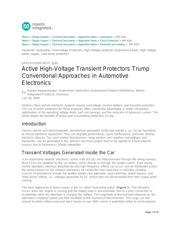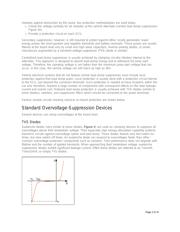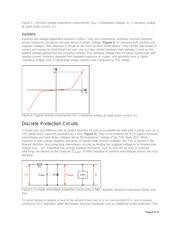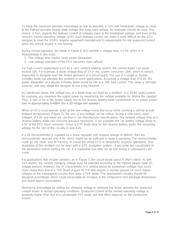下载

Maxim > Design Support > Technical Documents > Application Notes > Automotive > APP 4240
Maxim > Design Support > Technical Documents > Application Notes > Circuit Protection > APP 4240
Maxim > Design Support > Technical Documents > Application Notes > Protection and Isolation > APP 4240
Keywords: Automotive, OverVoltage Protectors, High Voltage protector, Automotive Power, High voltage
power supply, Load dump protection
APPLICATION NOTE 4240
Active High-Voltage Transient Protectors Trump
Conventional Approaches in Automotive
Electronics
By:
Robert Regensburger, Automotive
Specialist, Automotive Product Definitions, Maxim
Integrated Products, Germany
Jun 20, 2008
Abstract:
Most vehicle
electronic systems require overvoltage, reverse-battery, and transient protection.
The use of active protectors for these purposes offers substantial advantages in power dissipation,
optimization of the operating voltage limits, part cost savings, and the reduction of quiescent current. This
article details the benefits of active over conventional protection circuits.
Introduction
Various electric and electromagnetic disturbances generated inside and outside a car can be hazardous
to vehicle electronic equipment. They can degrade performance, cause malfunctions, and even destroy
electronic devices. The most severe disturbances—large positive and negative overvoltages and
transients—can be generated in the vehicle's electrical system itself or be applied to it from external
sources due to (erroneous) human interaction.
Transient Voltages Generated Inside the Car
In an automotive network, electronic control units (ECUs) are interconnected through the wiring harness.
Most ECUs are powered by the car battery, either directly or through the ignition switch. Even during
normal operation, electrical disturbances and high-frequency effects can occur, and be distributed across
the wiring harness to the onboard electronics by conduction and capacitive or inductive coupling.
Sources of disturbance include the ignition system, the alternator, load switching, switch bounce, and
"load-dump" effects, i.e., voltages generated by DC motors that are disconnected from their supply while
running.
The most aggressive of these surges is the so-called "load-dump pulse" (Figure 1). This transient
occurs when the engine is running and the battery lead is disconnected, due to a poor connection or
accidentally while the alternator is charging the battery. The magnitude of that transient depends on the
alternator's rotational speed and field excitation at the moment of disconnection. The surge can last
several hundred milliseconds and reach levels of over 100V, which is potentially lethal to semiconductor
Page 1 of 10








